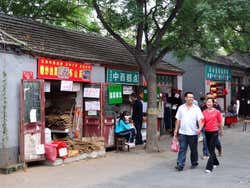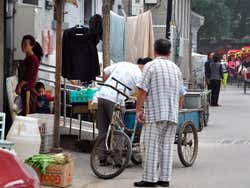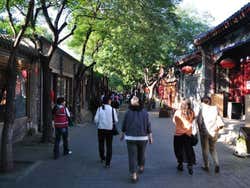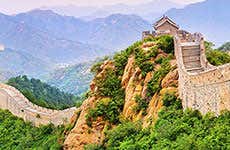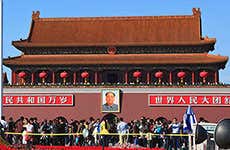
Beijing Hutongs
The alleys that make up the old part of Chinese cities are known as Hutongs. There are still many traditional streets in Beijing for you to discover.
Built during the Yuan, Ming, and Qing dynasties, the Beijing Hutongs are filled with houses located around a square courtyard where the inhabitants lead a traditional life anchored in the past.
Most of the houses don't have a bathroom, so it's very common to find inhabitants using communal bathrooms and washing clothes in the neighbourhood's common areas.
As you wander past the Hutongs, you'll see children playing happily and adults going about their daily life.
Some of the things that most often surprise tourists are the Pekingese walking around in their pyjamas and the children who, instead of wearing a diaper, wear pants with an opening.
An endangered species
Unfortunately, over the years many of the Hutongs have been demolished to make way for new residential and commercial areas. In 2000, 4,500 streets of old Beijing were still preserved, but a large part of these were demolished by the city's renovation plans for the 2008 Olympic Games.
Must-see hutongs
It's interesting to walk around the city's Hutongs or experience a rickshaw tour to see "without being seen". These are some of the most curious alleys:
- Jinsitao Hutongs: These ancient streets show the most traditional side of Beijing as well as the Jinghai Temple and Fengtai Nunnery.
- Hutongs located between the Drum Tower and Lake Shichahai: These are charming streets away from the busy noise of Beijing, which transport tourists to times gone by.
- Quianmen's Hutongs: Quianmen's Hutongs bring together different commercial, cultural and entertainment areas. While in the north the Hutongs are large and tidy, the south has the narrowest and most cluttered streets. The ones that stand area are the Jiuwan Hutong (the most convoluted), the Qianshi Hutong (the narrowest) and the Sanmiao Hutong (the oldest).
